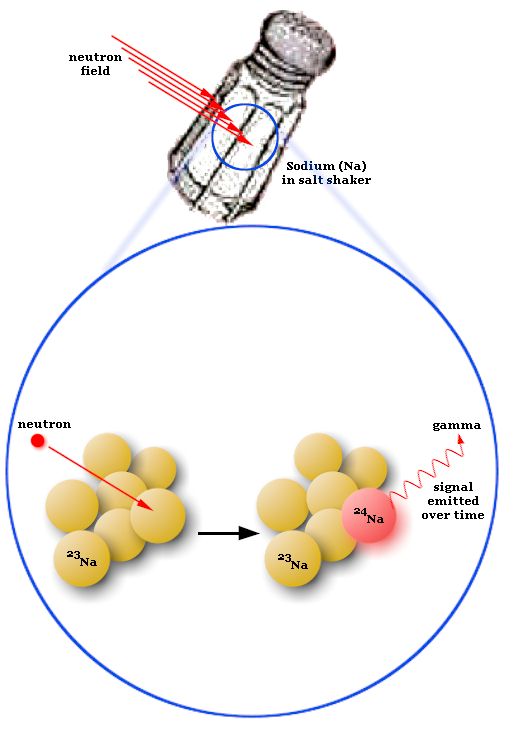Two types of activation techniques
In-Vivo Neutron Activation Analysis
All atoms in the body are capable of undergoing nuclear reactions when exposed to neutrons. When an atom captures a neutron, that atom is transformed to another nuclear state of the same element. The new atom can be radioactive. It will then decay and emit a radioactive signal which may be measured by special detectors.
Neutron
activation example
Neutrons interact with
common table salt (sodium chloride)

Some partial body techniques exist as well. These methods measure
specific elements or tissues in the body. For example, cadmium, mercury, iron,
iodine, aluminum, boron, lithium, and silicon may be measured. Target organs
include the kidneys, liver, brain, lungs, heart, and thyroid.
Types of IVNAA
Delayed Gamma Neutron Activation Analysis (DGNAA)
Neutron activation influences certain elements, such as calcium, to produce
gammas for a period of time. The gammas are measured by the whole body counter.
Prompt Gamma Neutron Activation Analysis (PGNAA)
Neutron activation stimulates some elements, such as nitrogen, to produce
very short-lived gammas which must be immediately detected and counted.
USDA/ARS
Children's Nutrition Research Center
1100 Bates Street, Houston, Texas 77030
© Copyright 2000-2007 Baylor
College of Medicine. All Rights Reserved.
Contact
Us.